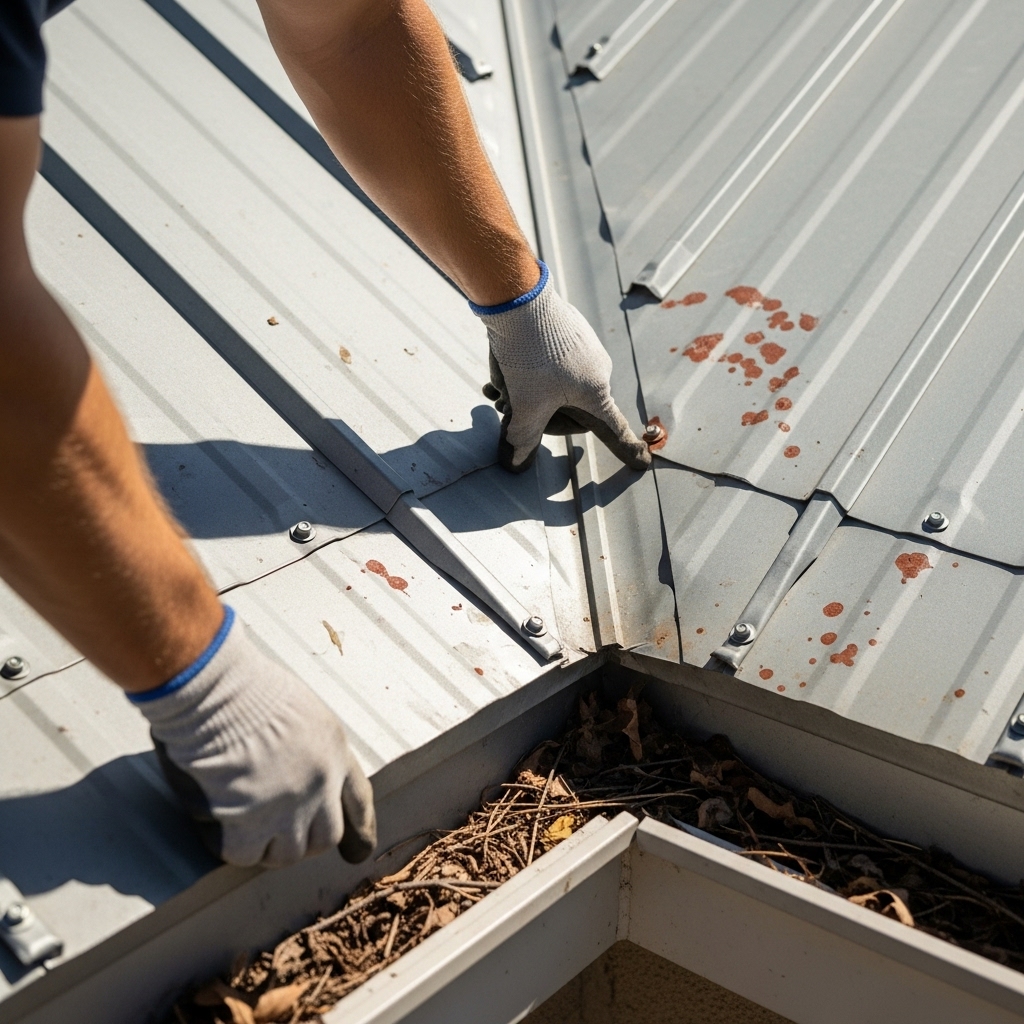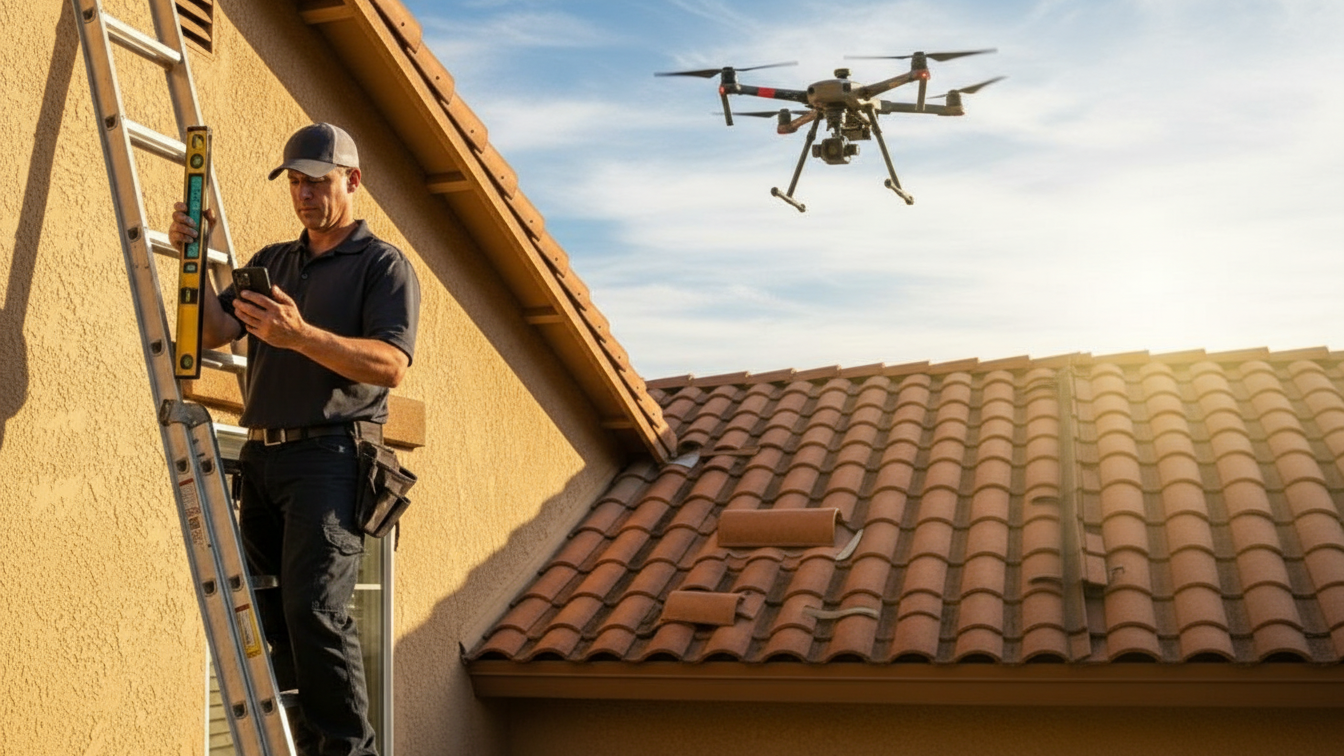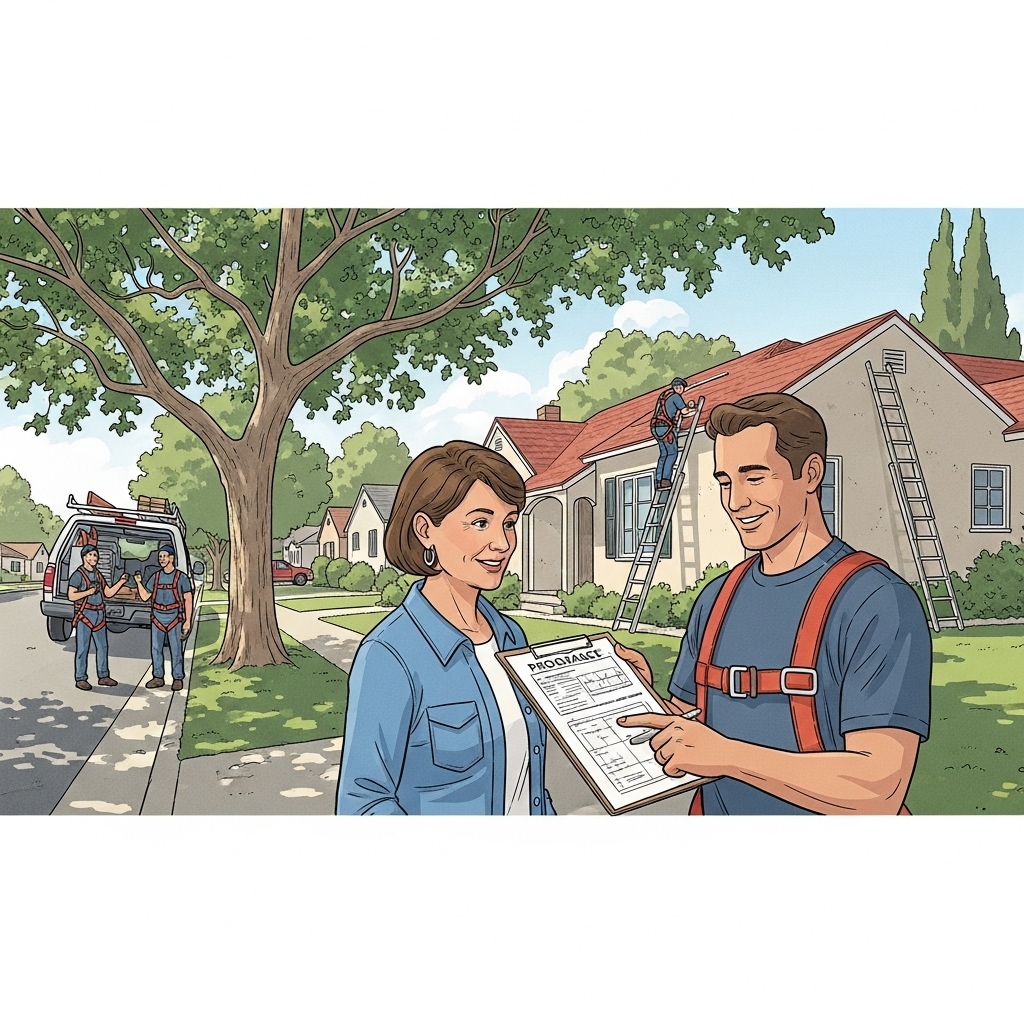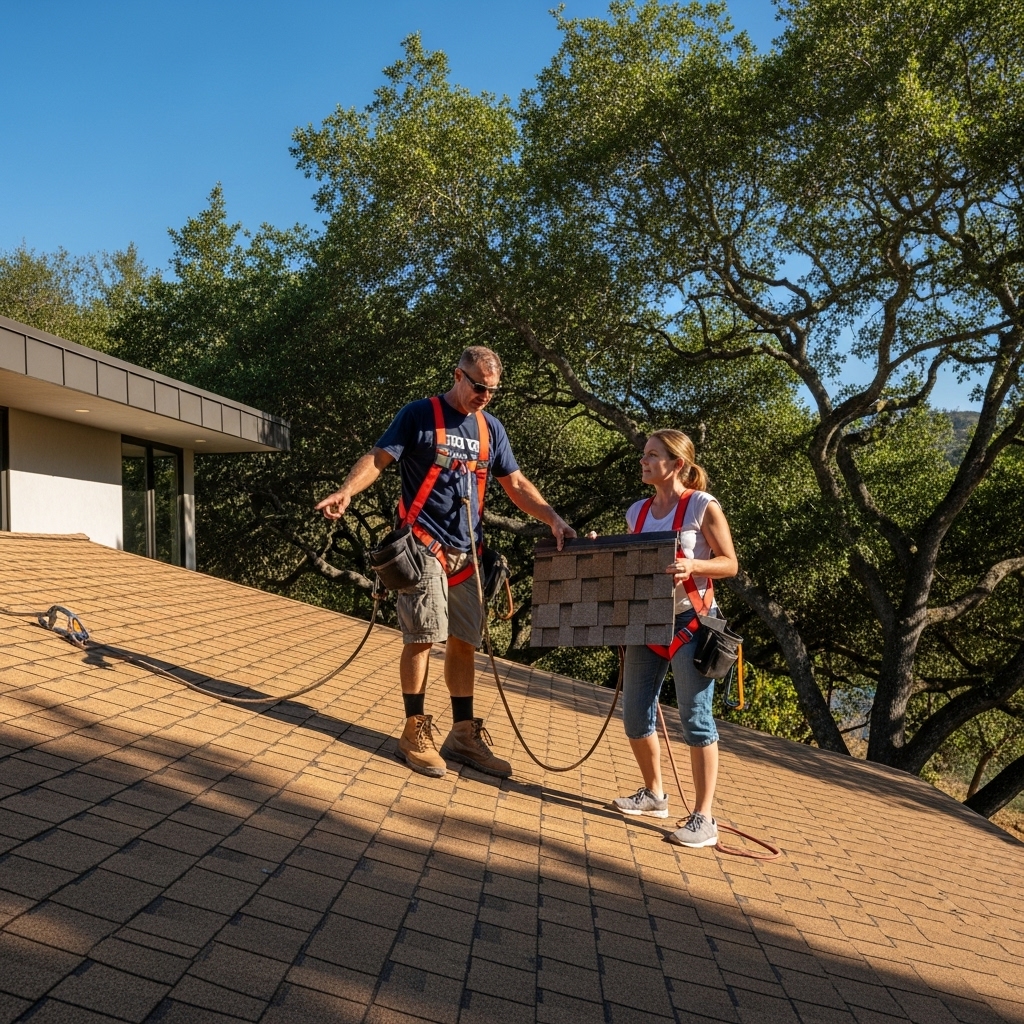Metal roofing has earned its reputation in Tarzana for strength, efficiency, and elegant curb appeal. Still, like any high-performance system, it requires thoughtful design, careful installation, and periodic care. The unique blend of Valley heat, seasonal winds, and occasional wildfire smoke presents conditions that can reveal weaknesses in an assembly that might go unnoticed elsewhere. As a local professional, I see patterns in the problems that arise, and I know how to address them so homeowners keep enjoying the benefits that drew them to metal roofing in the first place. The goal is not to worry you; it is to help you recognize early signs, understand root causes, and respond with solutions that hold up in our climate.
Most issues fall into a handful of categories: movement and aesthetics, water management, material compatibility, ventilation and condensation, debris and maintenance, and the stresses introduced by wind or rooftop equipment. Each has practical remedies. When the roof is treated as a coherent system—panels, fasteners, underlayment, flashings, ventilation—problems tend to shrink from crises to simple punch-list items.
Oil Canning: Understanding Movement and Appearance
Oil canning is the waviness that can appear in flat metal panels, especially on standing seam roofs with broad pan widths. In Tarzana’s heat, daily thermal expansion and contraction are normal. If panels lack room to move, or if substrate irregularities telegraph through, that movement may show up as visual undulation. While oil canning is typically aesthetic rather than structural, it can bother homeowners who expect a glass-flat surface in every light.
Prevention starts with panel design and substrate prep. Narrower pan widths, rib stiffeners, and tension-leveled coil help reduce the tendency. A smooth, properly fastened deck ensures the panel has an even foundation. Clips that allow controlled movement let the metal expand and contract without binding. If oil canning appears after installation, options include adjusting fasteners in localized areas, adding strategic stiffening, or learning how light and viewing angles emphasize or minimize the effect. Matte finishes, which are popular in Tarzana, also help by softening reflections that dramatize subtle undulations.
Fastener Concerns: Exposure, Back-Out, and Overtightening
Metal roofing often relies on a mix of concealed and exposed fasteners, depending on profile. In high-heat zones like ours, fasteners experience thermal cycles that can gradually loosen poorly set screws or compress washers. Exposed fasteners that are overtightened can damage gaskets; under-tightening allows micro-movement that eventually leads to back-out. Wind events can accelerate these trends if the initial installation did not use fasteners appropriate for the substrate or the specific load requirements.
Regular inspections make a big difference. Checking torque on exposed fasteners before the hottest months and after notable wind events helps maintain a tight, weather-ready assembly. Where feasible, standing seam profiles with concealed fasteners reduce long-term exposure and simplify maintenance. Using high-temperature, UV-stable sealants at complex intersections and ensuring fastener metallurgy is compatible with panel materials avoids galvanic headaches down the line.
Galvanic Corrosion: Compatibility Matters
Not all metals get along. If dissimilar metals are paired without isolation, especially where moisture can linger, galvanic corrosion may occur. In Tarzana’s dry climate, this often shows up at the interface between aluminum accessories and steel panels, or where copper components meet other metals. Water from irrigation overspray or coastal fog carried inland on rare days can feed these reactions.
Prevention is straightforward: use compatible metals or isolate dissimilar materials with proper gaskets, sealants, and coatings. Pay attention to fasteners, as a steel screw in an aluminum accessory can become a small but persistent corrosion point. When mixed-metal elements are necessary, detail them deliberately so water sheds quickly and does not pool at the interface.
Water Management: Valleys, Kick-Outs, and Wind-Driven Rain
Metal roofs excel at shedding water, but details matter at transitions. Valleys that gather flow from multiple planes can see high volumes during downpours. Without correctly sized valley pans, end dams, and diverters, water can overshoot or be pushed by wind beneath adjacent panels. Kick-out flashings at roof-to-wall intersections are another common weak point; if omitted or undersized, water can track behind siding or stucco.
In Tarzana, we occasionally get short, heavy rains that expose undersized components. The fix is design-forward: hemmed valley edges that resist uplift, closed valleys where appropriate, and purpose-formed diverters that set water on predictable paths. At roof-to-wall transitions, kick-outs that project sufficiently and counter-flashings that are integrated cleanly into stucco or siding make the difference between “almost right” and watertight.
Condensation and Ventilation: Invisible but Important
Even in a dry climate, temperature swings between night and day can create condensation risk beneath the roof. Warm interior air that reaches a cool surface can drop moisture where you least expect it—on the underside of panels or on the deck. Over time, that moisture can stress underlayment and framing. The solution is a balanced ventilation strategy: continuous ridge venting paired with unobstructed soffit intake, baffles that maintain airflow over insulation, and assemblies that include a thermal break or ventilated air space under the panels.
In vaulted ceilings and cathedral assemblies, unvented designs can work when built to the right standard, with continuous insulation above the deck and vapor-smart layers that control where condensation can form. The key is to match assembly type to roof shape and interior use so moisture never finds a long-term home inside the roof system.
Debris, Dust, and Ash: Seasonal Realities
Tarzana’s tree-lined streets are beautiful, but leaves and needles collect in valleys and gutters. Add summer dust and occasional wildfire ash, and you have material that can trap moisture at panel laps or slow drainage at roof edges. Over time, this debris can stain finishes and strain gutters in sudden rain. Where patios or flat roofs meet sloped metal sections, trapped debris can also create unsightly lines that age the roof prematurely.
A simple maintenance rhythm is the remedy: seasonal rinsing, gutter cleaning, and periodic checks of valleys and transitions. Where trees overhang the roof, trimming to reduce direct contact keeps surfaces cleaner and reduces abrasion. Screens on gutters and well-shaped diverters at tricky roof-to-roof joints help keep water moving and minimize accumulation.
Skylights, Chimneys, and Penetrations: Flashing Precision
Every penetration through the roof is a point that demands precise detailing. Skylights need raised curbs and integrated flashing kits; chimneys require step and counter-flashing that respects the wall cladding; vents must be booted and sealed with materials rated for high heat. Problems often trace back to shortcuts in these areas: sealant used in place of metalwork, or generic flashings not designed for the specific profile.
When issues show up—staining around a skylight, a persistent drip in a corner during wind-driven rain—the fix often means reworking the flashing using profile-specific components. It is also wise to check that any adjacent stucco or siding integrates properly with the flashing, including weep screeds and building paper layers that carry water safely down and out.
Solar Integration: Managing Attachments and Wire Paths
Tarzana’s embrace of solar means many metal roofs carry arrays. Done correctly, this is a perfect pairing. But problems arise when racking penetrations are overdriven, flashings are improvised, or wire management is an afterthought. On standing seam roofs, clamps should be carefully torqued to avoid seam damage; on other profiles, mounts need purpose-built flashings that maintain the roof’s water planes.
Wire routing is not merely cosmetic. Stray conductors can rub against panels in the wind, abrading insulation and causing noise or damage. Conduit paths should be deliberate, protected, and neatly anchored. Periodic checks after wind events keep everything secure and extend the service life of both roof and solar system.
Expansion, Contraction, and Noise
Metal moves with temperature changes. If panels are pinned too tightly or lack sliding clips where needed, that movement can telegraph as ticks or pops during rapid temperature shifts—sun to shade, for example. While these sounds are usually harmless, they can be a nuisance. The remedy is to give the metal a controlled pathway to move: floating clips, slotted fastener holes where appropriate, and expansion joints in long runs.
Underlayment also plays a role. Cushioning layers designed for metal roofing can damp tiny vibrations, and proper insulation helps reduce the audible range. With the right assembly, most Tarzana homes report quiet performance, even on days when temperatures swing dramatically.
Edge Detailing: Eaves, Gables, and Parapets
Edges are where wind and water try to sneak in. Inadequate hemming at eaves, short gable trims, or parapet caps without proper back-up flashing invite trouble during gusty conditions. On windy afternoons—especially in exposed hillside locations—uplift forces are strongest at edges and corners, exactly where shortcuts show.
Strong detailing neutralizes these forces. Hemmed eave edges, continuous cleats at gables, and parapet caps with positive drainage and under-flashing form a perimeter armor. Add ember-resistant venting at eaves and ridges, and you create a continuous, protective band that respects both wind and wildfire realities.
Proactive Maintenance: The Simple Advantage
Many issues can be prevented with a measured, simple maintenance plan. Seasonal rinsing clears dust and ash, gutters are kept flowing, and valleys are checked for leaves after windy days. Fastener checks—where systems use exposed screws—are quick and effective. Flashings at skylights and chimneys get an occasional once-over to ensure sealants are in good shape and metal interfaces remain tight. This rhythm not only extends service life; it maintains the polished look that made you choose metal in the first place.
If a concern crops up, addressing it early simplifies the repair and preserves the surrounding finishes. Because metal assemblies are modular, targeted fixes are often possible, allowing a technician to rework a specific area without disturbing the entire roof.
Mid-Project Course Corrections
Sometimes issues emerge during installation—perhaps a wrinkle in underlayment or a misaligned panel. In Tarzana’s heat, catching and correcting these details on the spot prevents downstream problems. A professional crew will stop, realign, and document adjustments. For homeowners, ask for progress photos at key milestones—underlayment down, flashings installed, panels locked—so you have a record of the assembly beneath the finished surface. That documentation is useful if you add solar later or if you want to verify details against manufacturer specifications.
Frequently Asked Questions
Why does my standing seam roof show slight ripples? That is likely oil canning, a visual effect from thermal movement or substrate unevenness. It is often aesthetic, not structural. Design choices like narrower pans, rib stiffeners, and matte finishes help minimize its visibility.
How often should I check fasteners? In Tarzana’s climate, a seasonal inspection is wise for systems with exposed fasteners, with a quick recheck after notable wind events. Concealed-fastener systems require less frequent attention but still benefit from periodic reviews at transitions and edges.
Can dissimilar metals really cause corrosion here? Yes, especially at small interfaces like fasteners or accessory pieces. Use compatible metals or isolate them with gaskets and coatings, and make sure water does not pool where different materials meet.
What is the most common source of leaks? Transitions and penetrations—valleys, skylights, chimneys, and roof-to-wall intersections. Precise flashing and properly sized diverters are the antidotes. When leaks appear, reworking these details with profile-specific components usually resolves the issue.
Do metal roofs make noise with temperature changes? They can if movement is constrained. Proper clip systems and details allow expansion and contraction without audible pops. Underlayment and insulation further damp incidental sounds.
How does wildfire risk factor into metal roof design? Metal’s non-combustible surface is a strong start. Add ember-resistant vents, tight edge detailing, and clean perimeters free of debris, and the roof becomes a key piece of a broader defensible-home strategy in Tarzana.
Is my roof compatible with solar? Almost certainly. Standing seam systems are ideal for clamp-on racking, and other profiles have dedicated mounts and flashings. Correct torque, proper flashing, and clean wire routing ensure a long, trouble-free pairing.
What maintenance keeps finishes looking good? Gentle rinsing to remove dust and ash, avoiding harsh abrasives, and trimming overhanging branches help. Keep gutters clear to prevent water from staining edges, and inspect high-sun areas to ensure coatings remain intact.
Can I walk on my metal roof? With care and knowledge of support points, yes, but it is best left to professionals who know where loads can be safely placed and how to avoid panel damage. If you must access the roof, choose cooler hours and wear soft-soled shoes.
What should I do if I notice a drip during a storm? Document the location inside, note wind direction, and arrange a focused inspection. Often the solution involves refining a nearby flashing or diverter rather than a large-scale repair.
If you are experiencing a concern—or simply want confidence before the next season—reach out for a methodical assessment and plan. A careful review will address root causes and restore your roof’s quiet reliability. When you are ready to reinforce performance or plan an upgrade, schedule a consultation for precise metal roof installation solutions that keep your Tarzana home protected and poised for the long haul.






